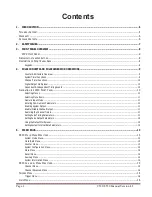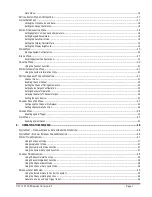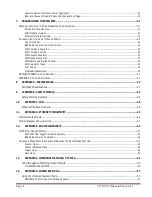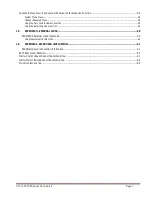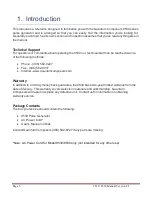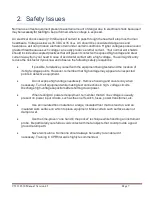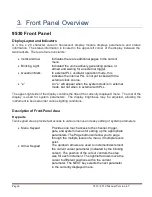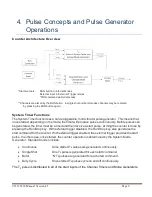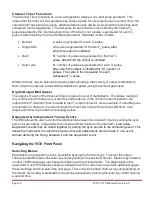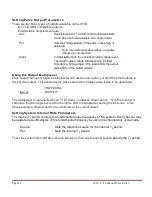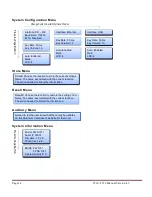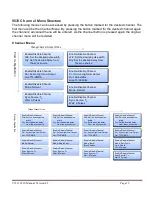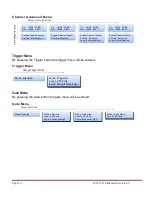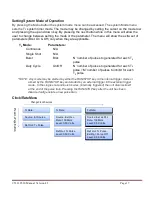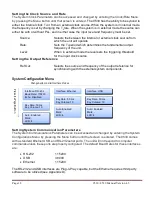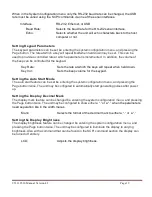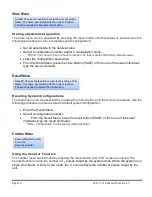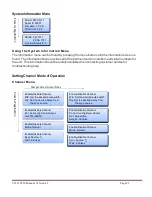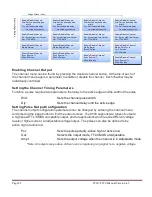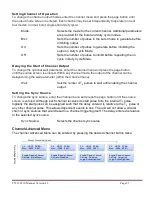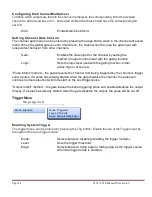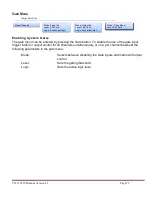
Page 10
9530/8530 Manual Version 4.5
Channel Timer Functions
The Channel Timer functions as a non-retriggerable, delayed, one shot pulse generator. This
means that the timer will only generate one delayed pulse for every start pulse received. Once the
channel timer has started counting, additional start pulses will be ignored until the pulse has been
completed (non-retriggerable). The start pulse for each channel is provided by the internal T
0
pulse generated by the internal system timer. Whether or not a pulse is generated for each T
0
pulse is determined by the Channel Mode Generator. Standard modes include:
Normal
A pulse is generated for each T
0
pulse.
Single Shot
One pulse is generated for the first T
0
pulse, after
which the output is inhibited.
Burst
‘N’ number of pulses are generated for the first T
0
pulse, after which the output is inhibited.
Duty Cycle
‘N’ number of pulses are generated for each T
0
pulse
after which the output is inhibited for ‘M’ number of
pulses. The cycle is then repeated for each
subsequent
T
0
pulse.
Different modes may be selected for each output, allowing a wide variety of output combinations.
Each output may also be independently disabled or gated (using the external gate input).
Digital Output Multiplexer
The output s of each of the Channel Timers is routed to a set of multiplexers. This allows routing of
any or all Channel Timers to any or all of the units’ outputs. In the normal mode of operation, the
output of the n
th
Channel Timer is routed to the n
th
output connector. As an example, if a double pulse
is required on Channel A, one can multiplex the Channel A timer with the Channel B timer, then
adjust each timer to provide the necessary pulses.
Dependent & Independent Timing Events
The 9530 allows the user to control the relationship between the Channel Timers by setting the sync
source for each timer. Independent events are all timed
relative to the internal T
0
start pulse.
Dependent events may be linked together by setting the sync source to the controlling event. This
allows the instrument to match the timed events and adjustments can be made in one event
without detuning the timing between it and the dependent event.
Navigating the 9530 Front Panel
Selecting Menus
Parameters are grouped in menus, selectable by using the function keys. To select the output
channel parameters press the letter key corresponding to the desired channel. Menus may include a
number of different pages, each page containing up to four parameters. The status block in the
upper-left corner of the display shows a vertical arrow if the current menu contains additional pages.
Press the Page button to select the next page. There may be multiple channel menus depending on
the model. Secondary or advanced menus can be accessed by pressing the letter key of that channel
a second time.


